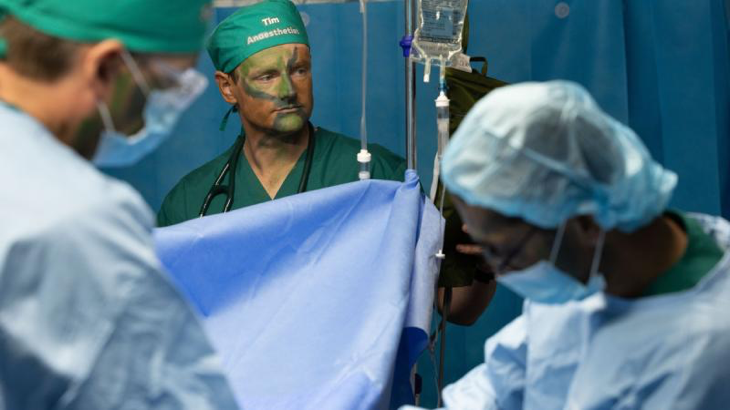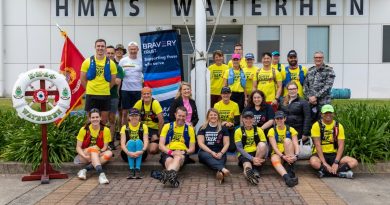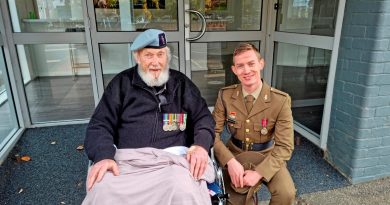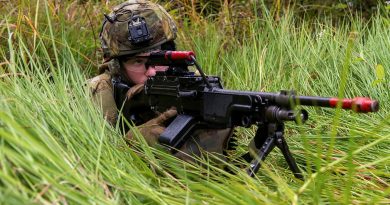The person standing between patient and pain

The battlefield can leave soldiers with penetrating injuries and blast trauma, often leading to amputations and catastrophic haemorrhage.
CAPTION: Army anaesthetist Major Timothy Charles from the 2nd Health Brigade participates in a simulated mass-casualty scenario in the surgical bay at the Role 2 Basic medical treatment facility during Exercise Predator’s Run at the Bradshaw Field Training Area. Story and photo by Sergeant Matthew Bickerton.
Once in theatre, standing between the patient and unimaginable pain is an anaesthetist who administers agents to prevent and manage pain, as well as monitoring and maintaining a patient’s vital functions before, during and after surgery.
Major Tim Charles, an Army anaesthetist from 2nd Health Brigade, said the type and severity of injury, amount of blood loss and a patient’s neurological status were all factors when selecting the types and dosages of anaesthetics.
The considerations are complex and require years of general and specialised training.
This begins with medical school, followed by an internship, residency and anaesthetic training, and culminates in fellowship and specialist registration.
“I knew I wanted to specialise in anaesthetics during my second year as a doctor, while doing a six-month placement in anaesthetics,” Major Charles said.
His training from the first years in medical school to specialising took 13 years and happened through the ADF Graduate Medical Scheme and Medical Specialist Program.
Major Charles initially joined the reserves as an officer cadet during his undergraduate studies, but then joined the Graduate Medical Scheme once he got into medical school.
Between the two programs, Major Charles also completed general practice training as a medical officer.
“In this profession, you can build close connections with patients who have complete trust in you,” he said.
“Studying human physiology and pharmacology also adds to the challenge and interest of this field.”
Major Charles is a full-time Army anaesthetist, but his duties extend beyond time in uniform.
To maintain skills, the Glenelg local devotes much of his time to the Royal Adelaide Hospital and to MedStar, South Australia’s medical retrieval service.
“The Army covers my salary, allowing me to provide public services for free, but with the understanding that I’m on short notice if the Army needs me,” Major Charles said.
He recently took part in Exercise Predator’s Run at Bradshaw Field Training Area in July, filling a critical position in the Role 2 Basic, a medical treatment facility that operates closer to the frontline.
“Here, we can perform damage control resuscitation as well as life-and-limb-saving surgeries for casualties who might not survive the journey to a higher-level medical facility,” Major Charles said.
.
.

.
.






Glad to see some of the Medicos are being recognized for the valuable work they do.